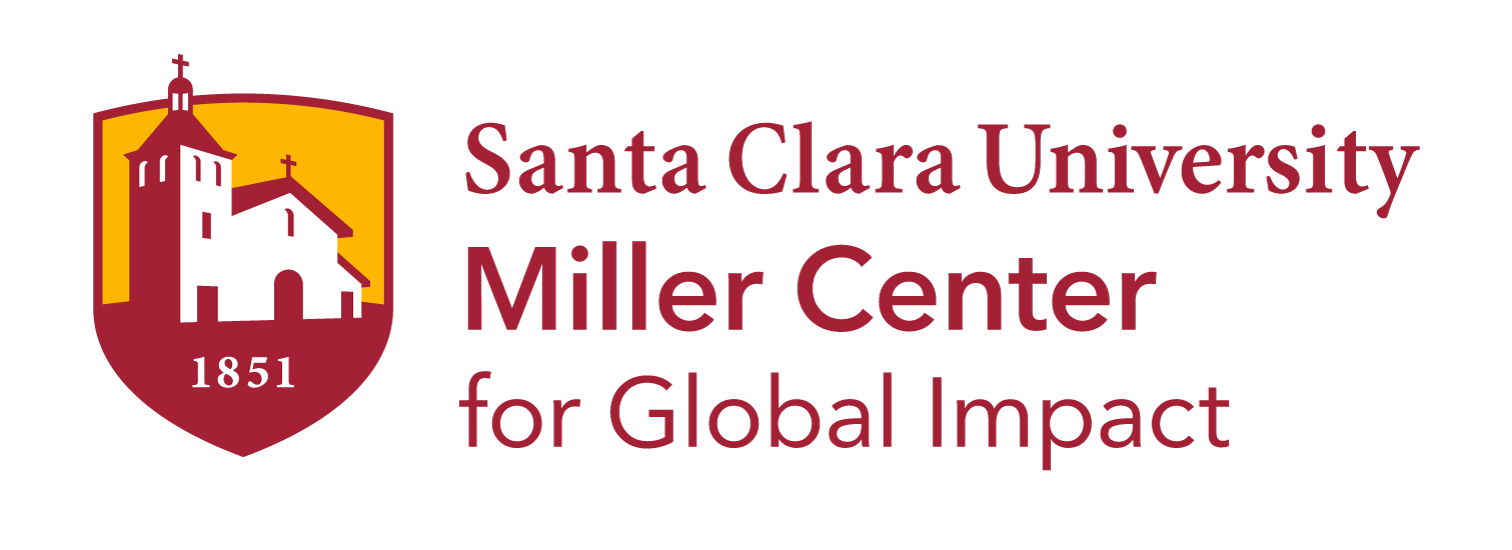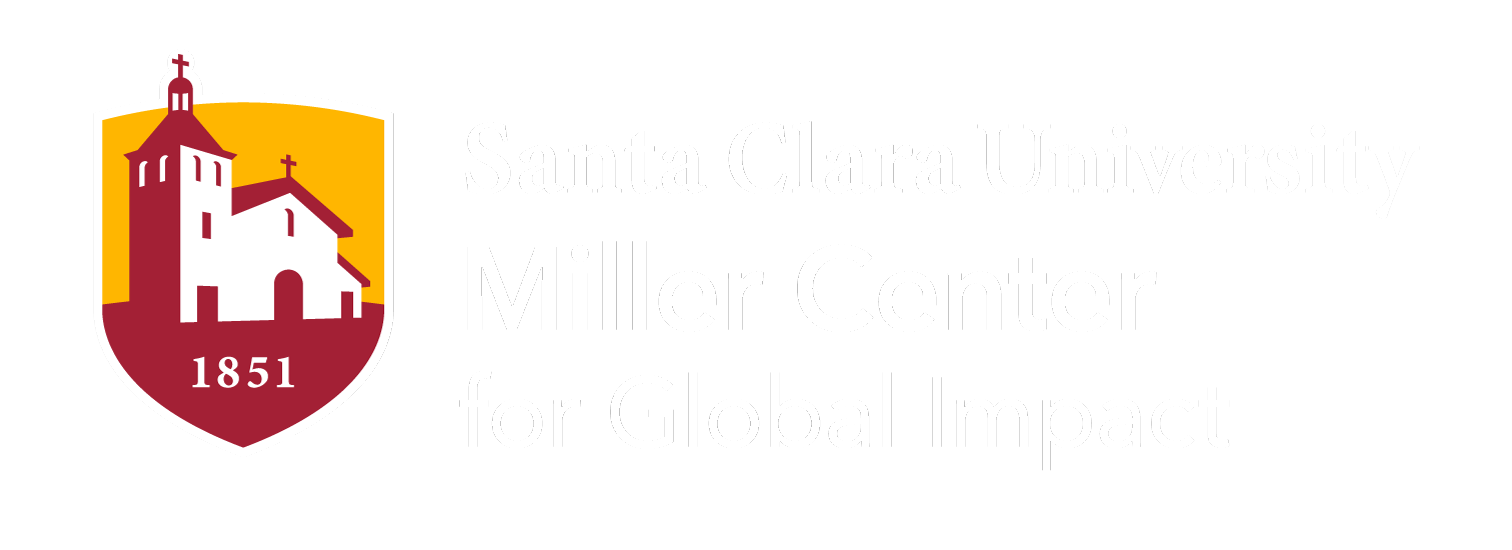In Summer 2024, I joined Miller Center’s Immersion Trip to Rwanda and Kenya, a journey that brought our Center and Santa Clara University’s values to life in powerful, unexpected ways. These trips are designed to showcase Miller Center’s mission in action, connecting our community to the impact entrepreneurs we support across Sub-Saharan Africa.
But this trip — this trip was different.
It was a once-in-a-lifetime experience that offered something rare: the opportunity to watch three remarkable leaders in action — President Paul Kagame of Rwanda, SCU President Julie Sullivan, and Miller Center’s Executive Director Brigit Helms — and to see leadership not just talked about, but lived.
Each of them left an indelible mark on me, not through grand speeches or dramatic gestures, but through presence, clarity, resilience, and deep humanity.
Presence, Dignity, and Sovereignty: A Conversation with President Paul Kagame
We weren’t sure it would happen. It was the final night of our week in Rwanda. Then, at the very last minute, President Paul Kagame, just back from international travel, invited our delegation to his private office in Kigali.
What followed was one of the most impactful meetings of my professional life.
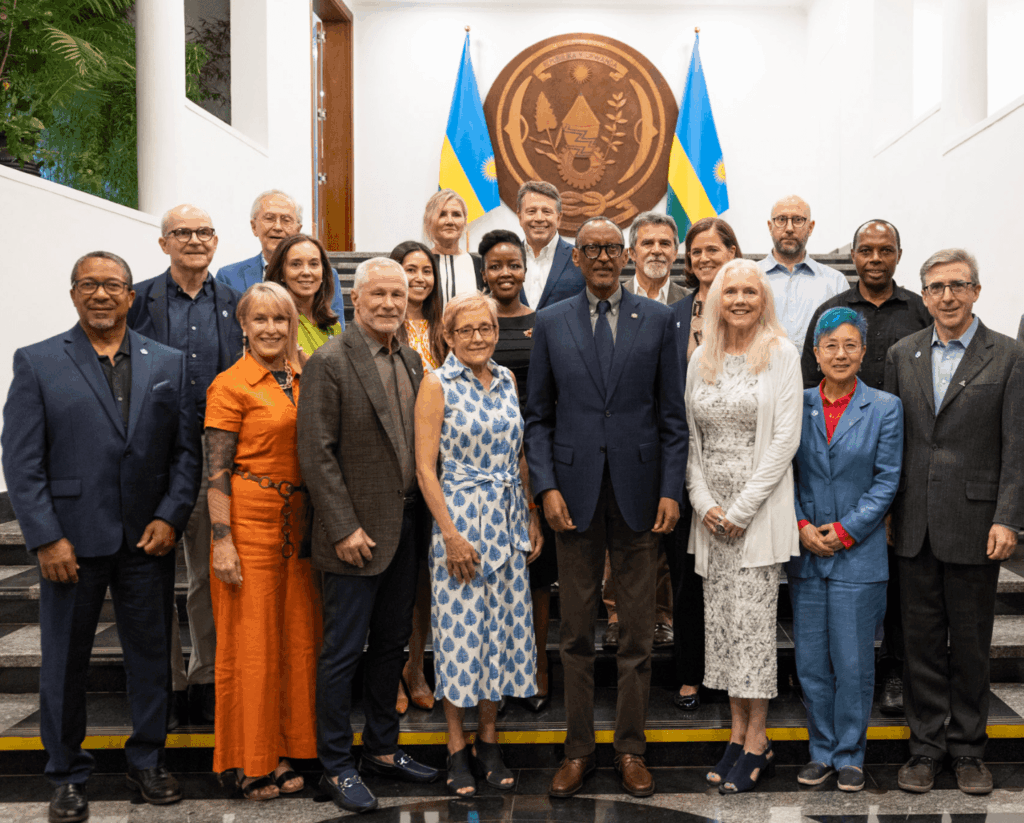
President Kagame must have been exhausted. Yet he greeted each of us with intention and warmth. He listened carefully, spoke with clarity, and articulated a bold vision for entrepreneurship — not merely as an engine of economic growth, but as a mindset of agency and dignity. For him, entrepreneurship is a pathway to long-term sovereignty for his people.
In that quiet, focused room, I was reminded that real leadership isn’t about theatrics. It’s about being present when no one expects you to be, and carrying a vision that lifts others with you.
Chris Lowney’s concept of heroism came to life at that moment: the idea that leadership means striving to shape a better future, not waiting for golden opportunities to arrive.
Calm in Crisis: Leadership Under Pressure with President Julie Sullivan
Just four days after that incredible meeting in Rwanda, our team found ourselves caught in the middle of political unrest in Nairobi, Kenya — a wave of protests that escalated suddenly. Tear gas clouded the air. Sirens echoed. Amid the chaos, our immediate priority was the safety of our delegation and student fellows.
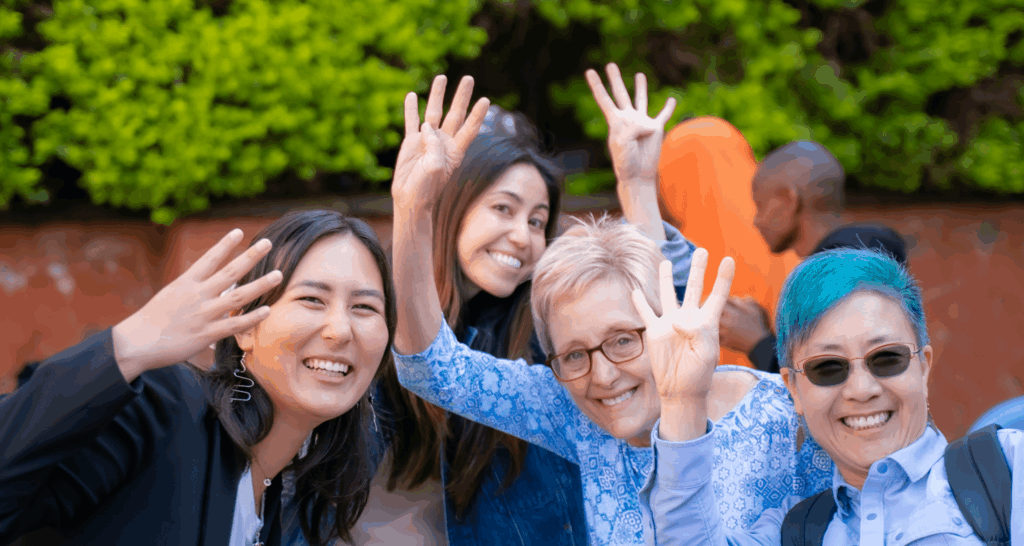
Everyone made it to safety. But once we were back on the bus and out of harm’s way, I sat in the back and quietly broke down. The stress and emotion caught up to me.
That’s when President Sullivan sat next to me. She said nothing at first, just rested her hand on my knee in silent support. Then, gently, she asked the most grounded question:
“How do we move forward from here?”
Her calm, empathy, and clarity in that moment captured the essence of situational leadership and self-awareness, both core elements in Jim Morgan’s and Chris Lowney’s frameworks. She embodied a key trait of a leader that Jim Morgan defines as calm under pressure and what Lowney defines purely as love — the ability to see and honor the humanity in others, even in moments of crisis. In that moment, President Sullivan’s composure projected a steadiness that left me feeling reassured that we would get through this together.
Culture, Creativity, and Seeing the Whole Person: Lessons from Brigit Helms
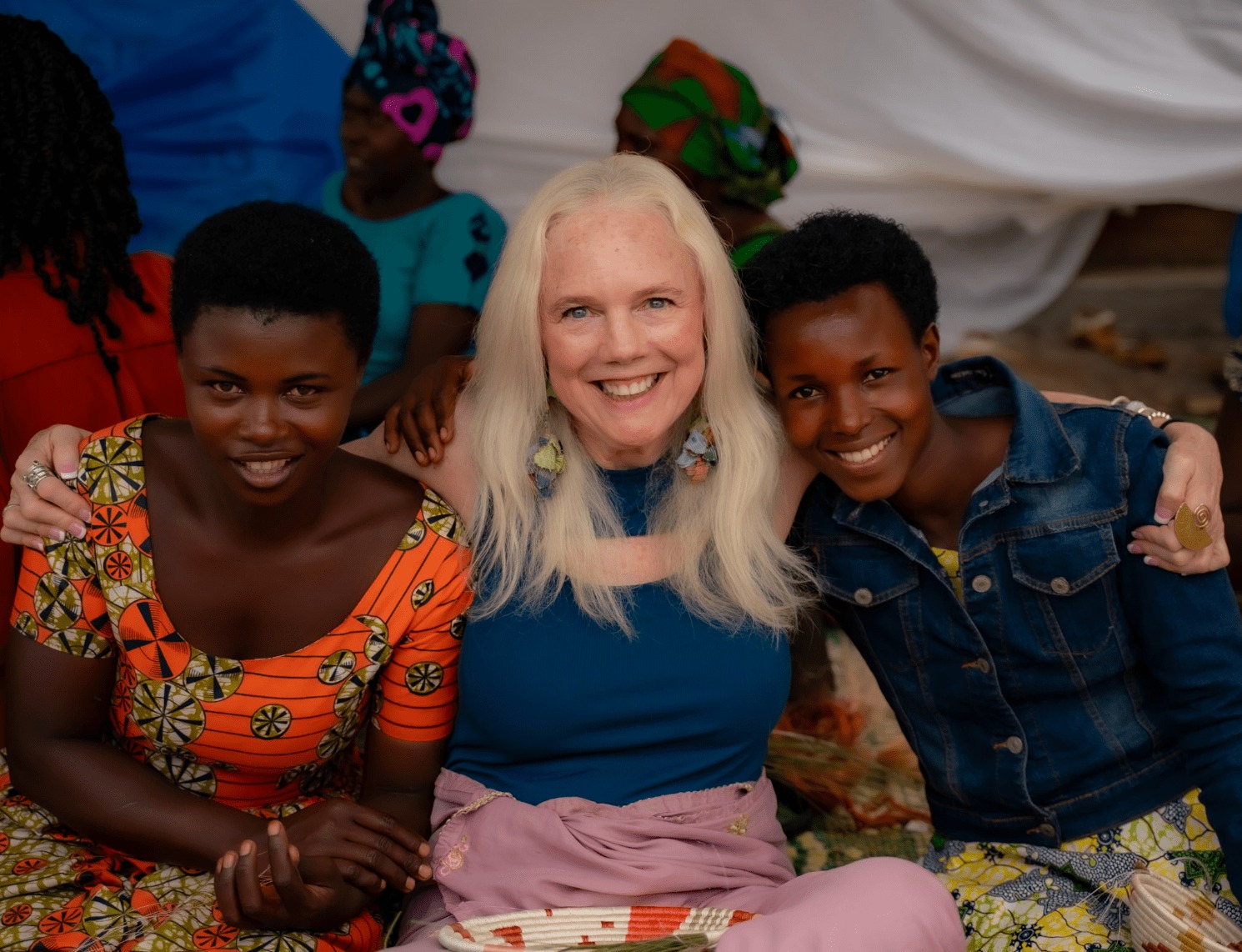
Throughout the trip, Brigit Helms, Miller Center’s Executive Director, did something that seemed small but meant everything: she saw people. She noticed strengths. She lifted others up.
After the trip, she sent each of us who attended the immersion trip a personal email reflecting back on what we uniquely contributed to the journey. It was clear she had observed, listened, and led with intention. Each note was tailored, thoughtful, and sincere. Everyone felt seen and valued.
During staff meetings, Brigit often encourages our team to think outside the box and asks:
“How can we do this differently?”
“How can we innovate and stay aligned with our mission?”
She pushes for creative thinking without losing sight of what matters. She listens to understand, encourages joy, and creates space for learning. Her leadership reflects what Lowney calls ingenuity, adapting confidently to change, and what Morgan champions as building a culture of accountability and excellence.
Her leadership style reminds me of a powerful truth:
All worthwhile enterprises seeking success are human systems that require leadership and management. — Jim Morgan
What These Three Leaders Taught Me
These three leaders, who are all different in title, context, and style, embody the Four Pillars of Heroic Leadership in their own way:
- Self-Awareness: Knowing who they are, showing up grounded in their values
- Ingenuity: Adapting confidently, thinking creatively in uncertain circumstances
- Love: Seeing and honoring the dignity and potential in others
- Heroism: Pursuing a vision beyond themselves, especially when it’s hard
From Jim Morgan’s Morganisms, they brought to life ideas like:
- Calm under pressure
- Situational leadership
- Creating a culture of accountability and care
- Focus on results over credit
- Innovation in the face of complexity
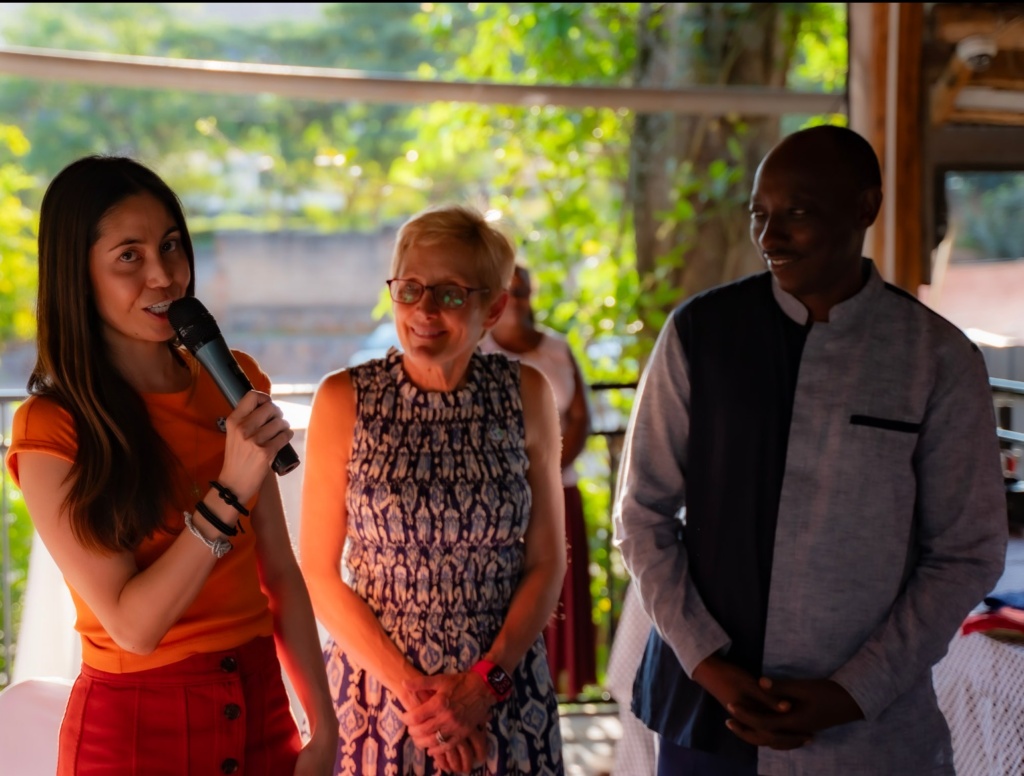
What I saw, felt, and learned during the 2024 Africa Immersion trip will stay with me. It shaped not just how I understand leadership, but how I aspire to lead.
Leadership is not reserved for CEOs or heads of state. As Morgan reminds us, it’s something we can all learn, practice, and grow into.
And as these three incredible leaders showed me, it’s in the small, consistent actions that the strongest leadership emerges.
I love this quote by Jim Morgan:
Hope and optimism are humanity’s driving forces.
Because in Rwanda and Kenya, I saw this truth embodied. And I returned not just inspired, but changed.
__________
Photo Credits:
1. Rwanda’s President Paul Kagame meeting with Miller Center delegation in Kigali
2. With Santa Clara University President Julie Sullivan (center), Miller Center Lewis Family Fellow Morgan Vodzak, and Miller Center Executive Mentor Cynthia Dai
3. Brigit Helms with All Across Africa weavers
4. Speaking at the Centre Christus Spirituality Center Reception with President Sullivan and Father Rugaragu Innocent in Kigali, Rwanda
